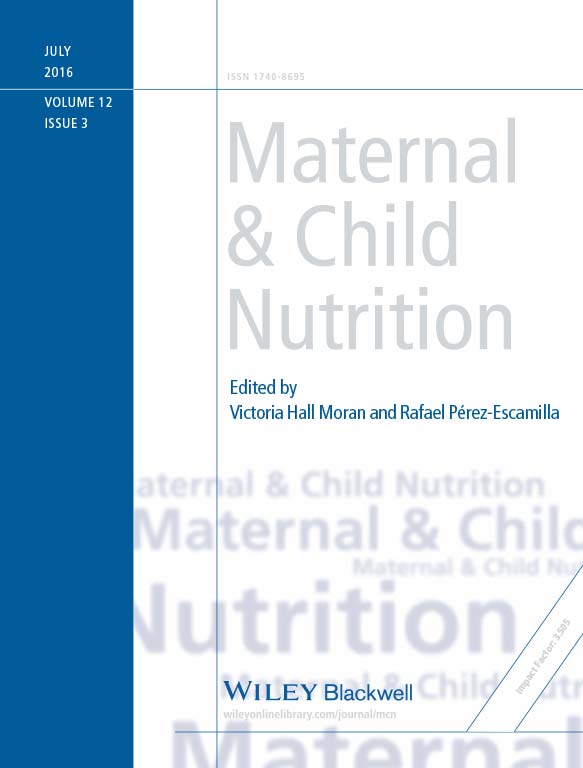This article was published in the Maternal & Child Nutrition Supplement: Availability, Promotion and Consumption of Commercial Infant Foods.
Abstract: There are limited data describing infant and young child feeding practices (IYCF) in urban Tanzania. This study assessed the types of foods consumed by children under 2 years of age and maternal exposure to promotions of these foods in Dar es Salaam, Tanzania. A cross-sectional survey was conducted among 305 mothers of children less than 24 months of age who attended child health services in October and November, 2014. Among infants less than 6 months of age, rates of exclusive breastfeeding were low (40.8%) and a high proportion (38.2%) received semi-solid foods. Continued breastfeeding among 20–23-month-olds was only 33.3%. Consumption of breastmilk substitutes was not prevalent, and only 3.9% of infants less than 6 months of age and 4.8% of 6–23 month-olds were fed formula. Among 6–23-month-olds, only 38.4% consumed a minimum acceptable diet (using a modified definition). The homemade complementary foods consumed by the majority of 6-23-month-olds (85.2%) were cereal-dominated and infrequently contained micronutrient-rich ingredients. Only 3.1% of 6–23-month-olds consumed commercially produced infant cereal on the day preceding the interview. In contrast, commercially produced snack foods were consumed by 23.1% of 6–23-month-olds. Maternal exposure to commercial promotions of breastmilk substitutes and commercially produced complementary foods was low (10.5% and 1.0%, respectively), while exposure to promotions of commercially produced snack foods was high (45.9%). Strategies are needed to improve IYCF practices, particularly with regard to exclusive and continued breastfeeding, increased dietary diversity and consumption of micronutrient-rich foods, and avoidance of feeding commercially produced snack foods.
Authors: Bineti S. Vitta, Margaret Benjamin, Alissa M. Pries, Mary Champeny, Elizabeth Zehner and Sandra L. Huffman
View Resource
